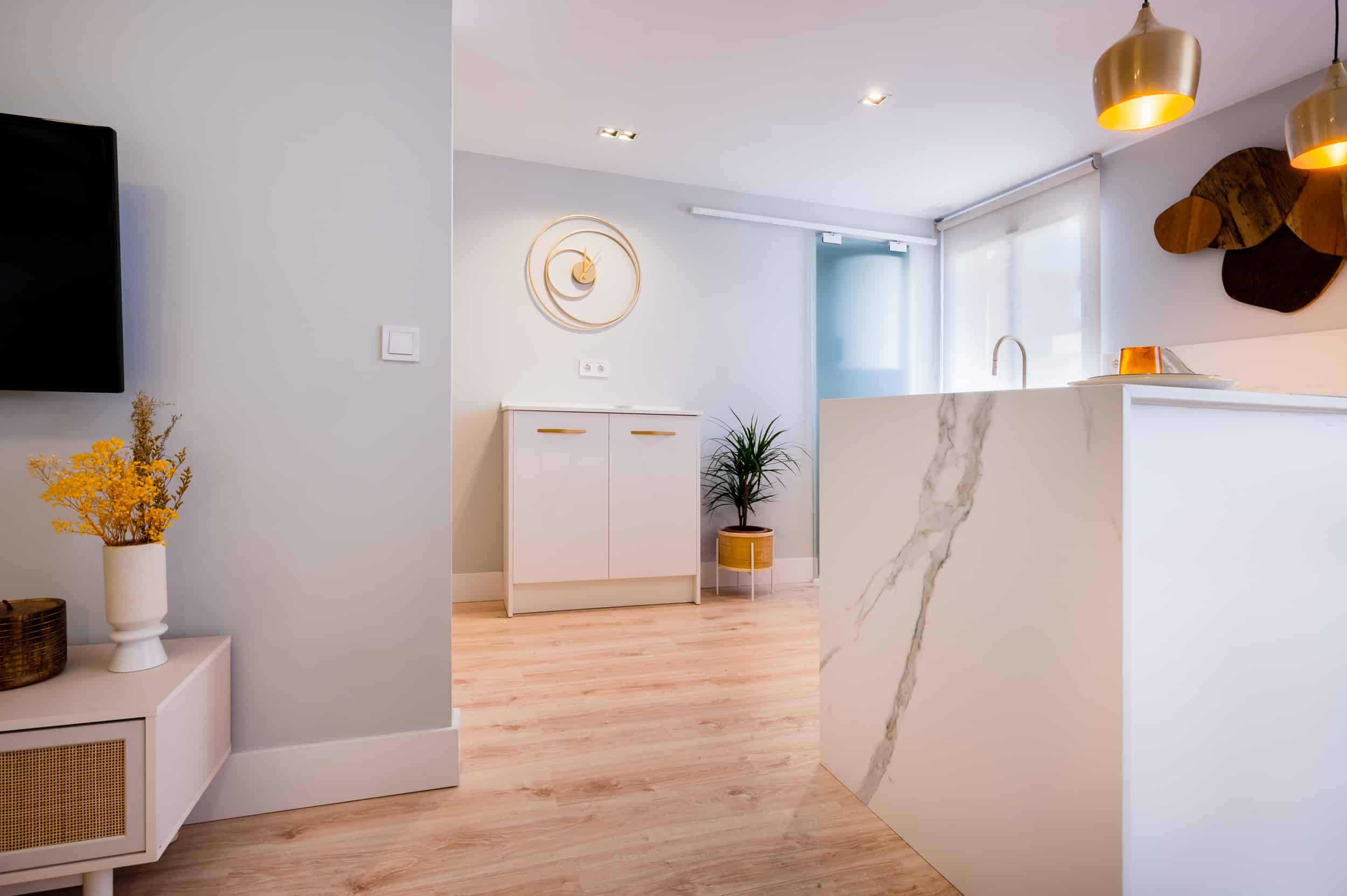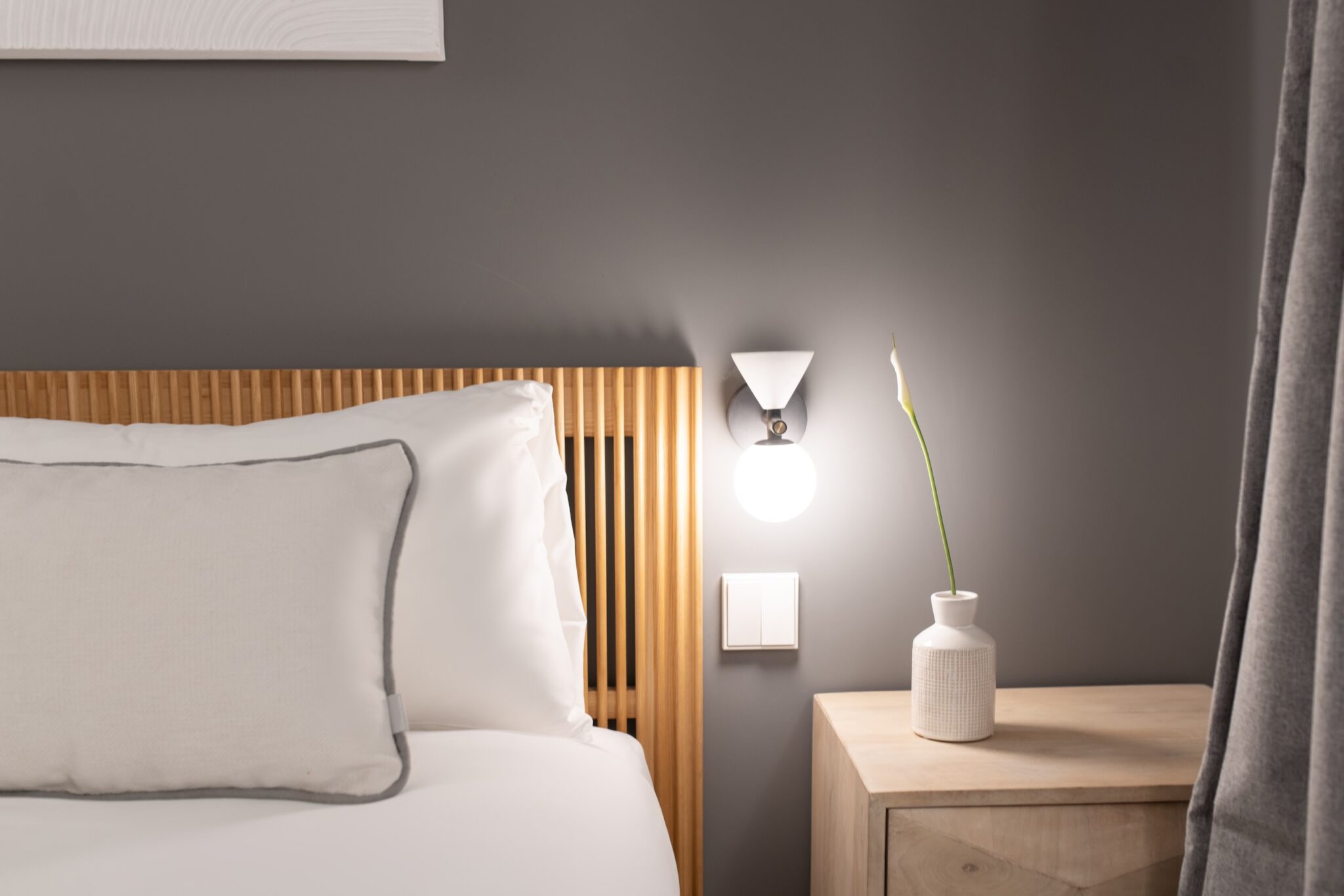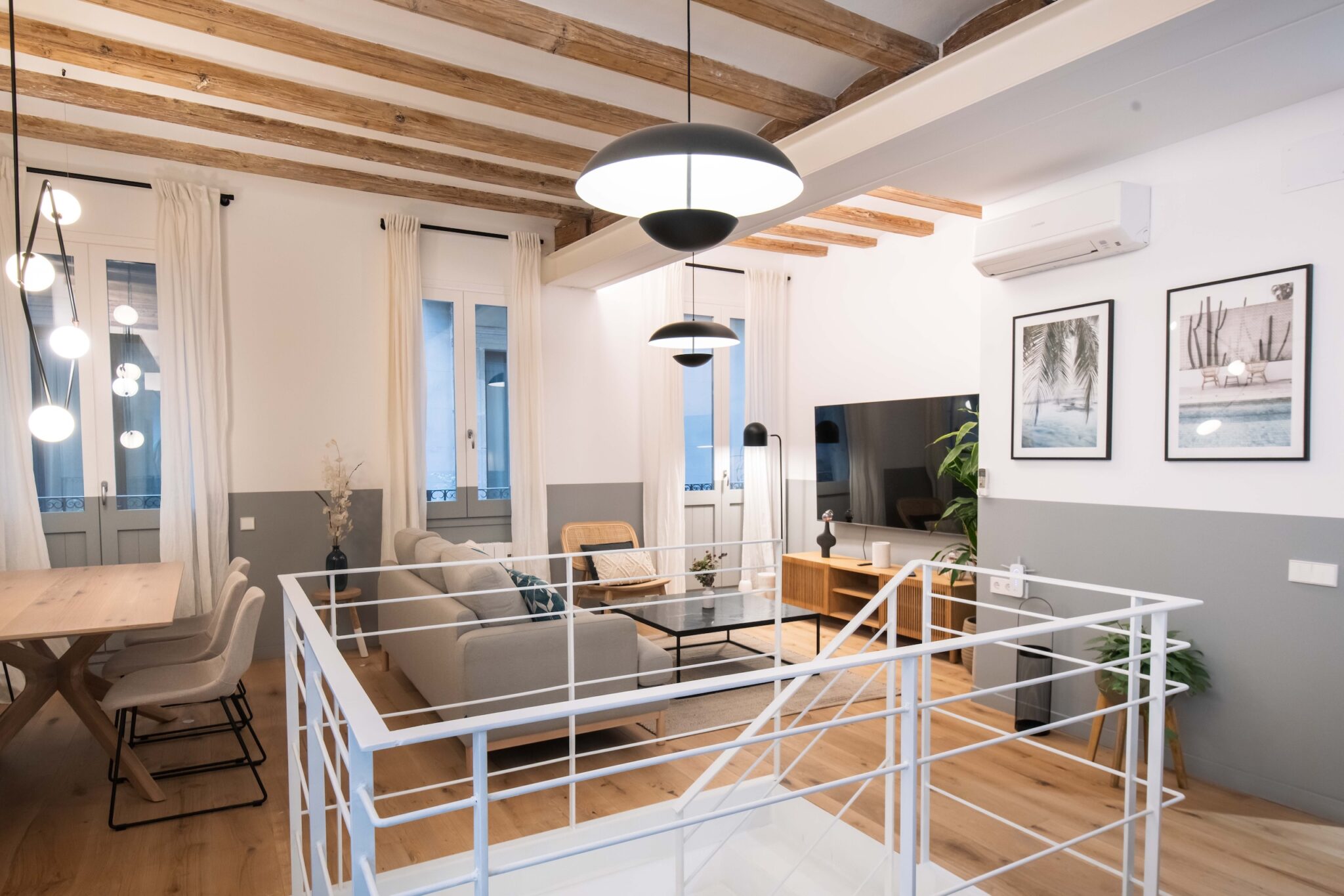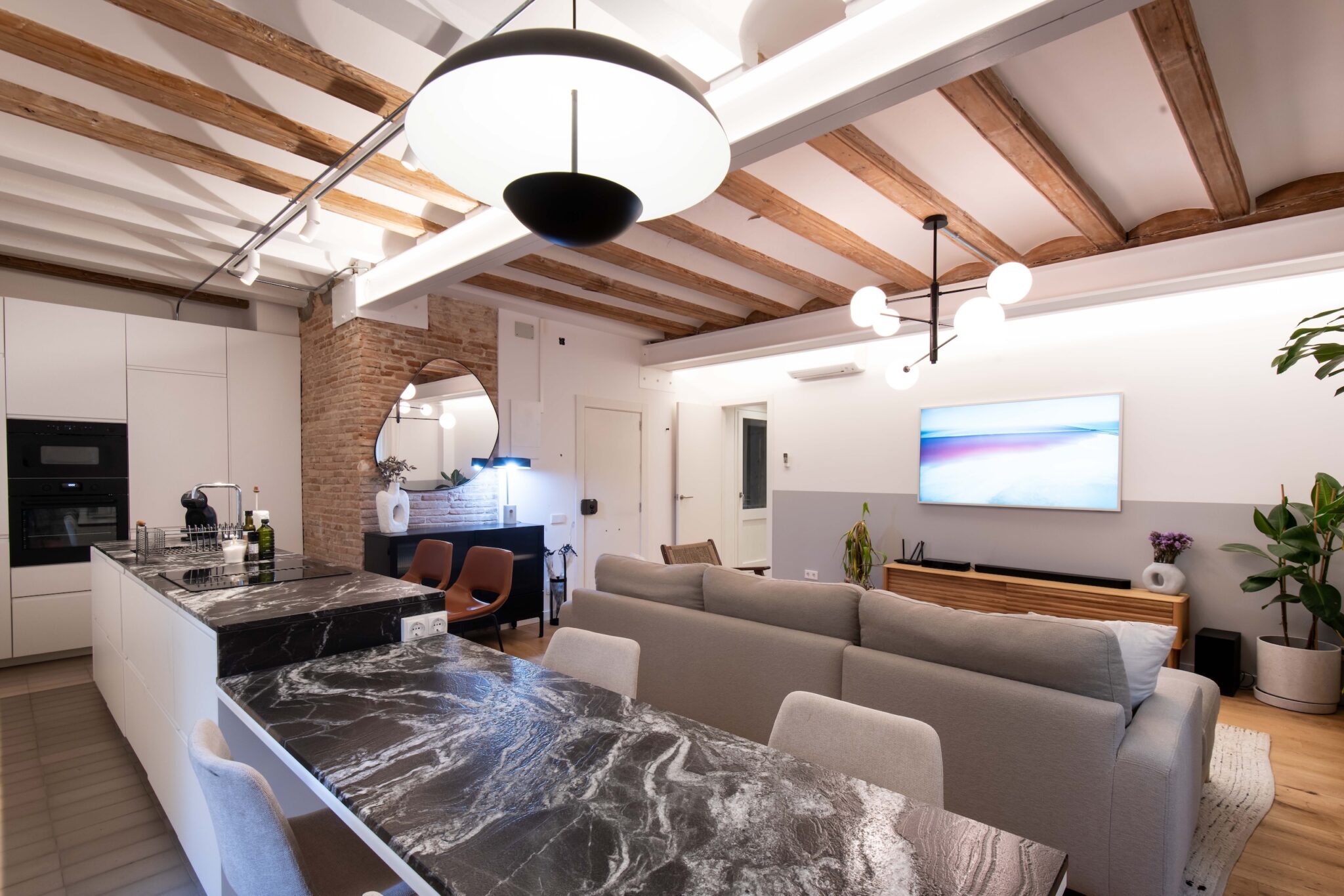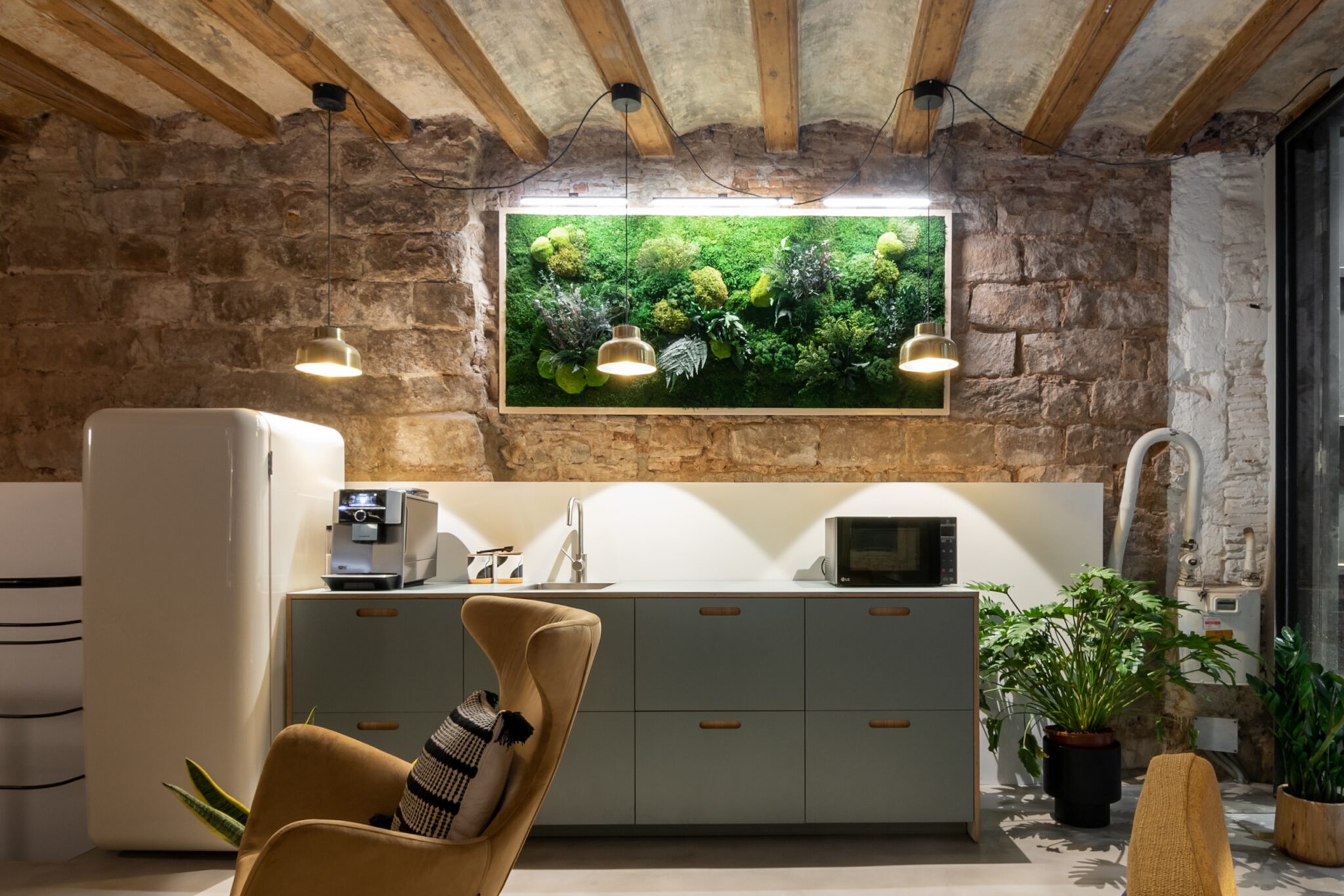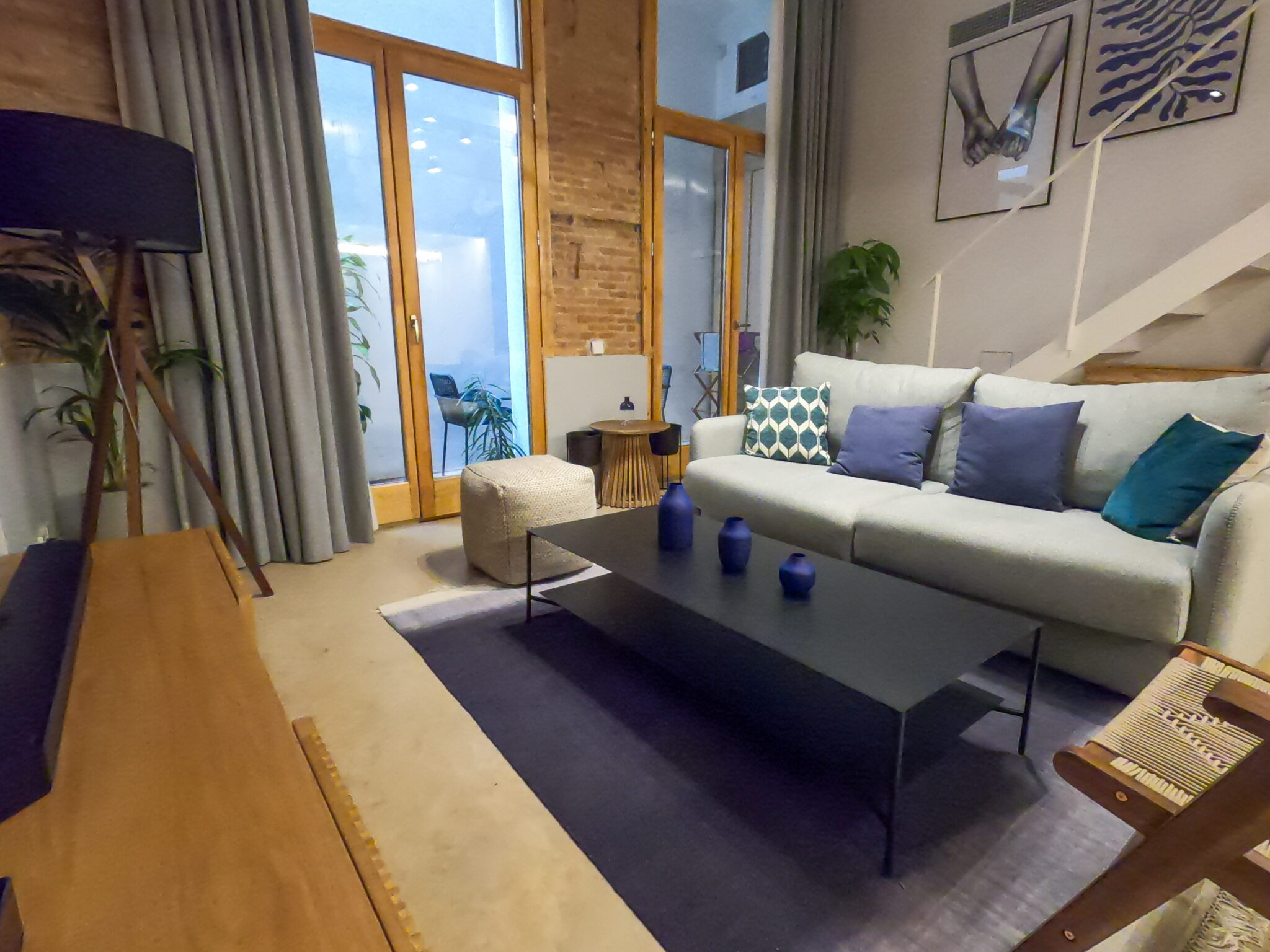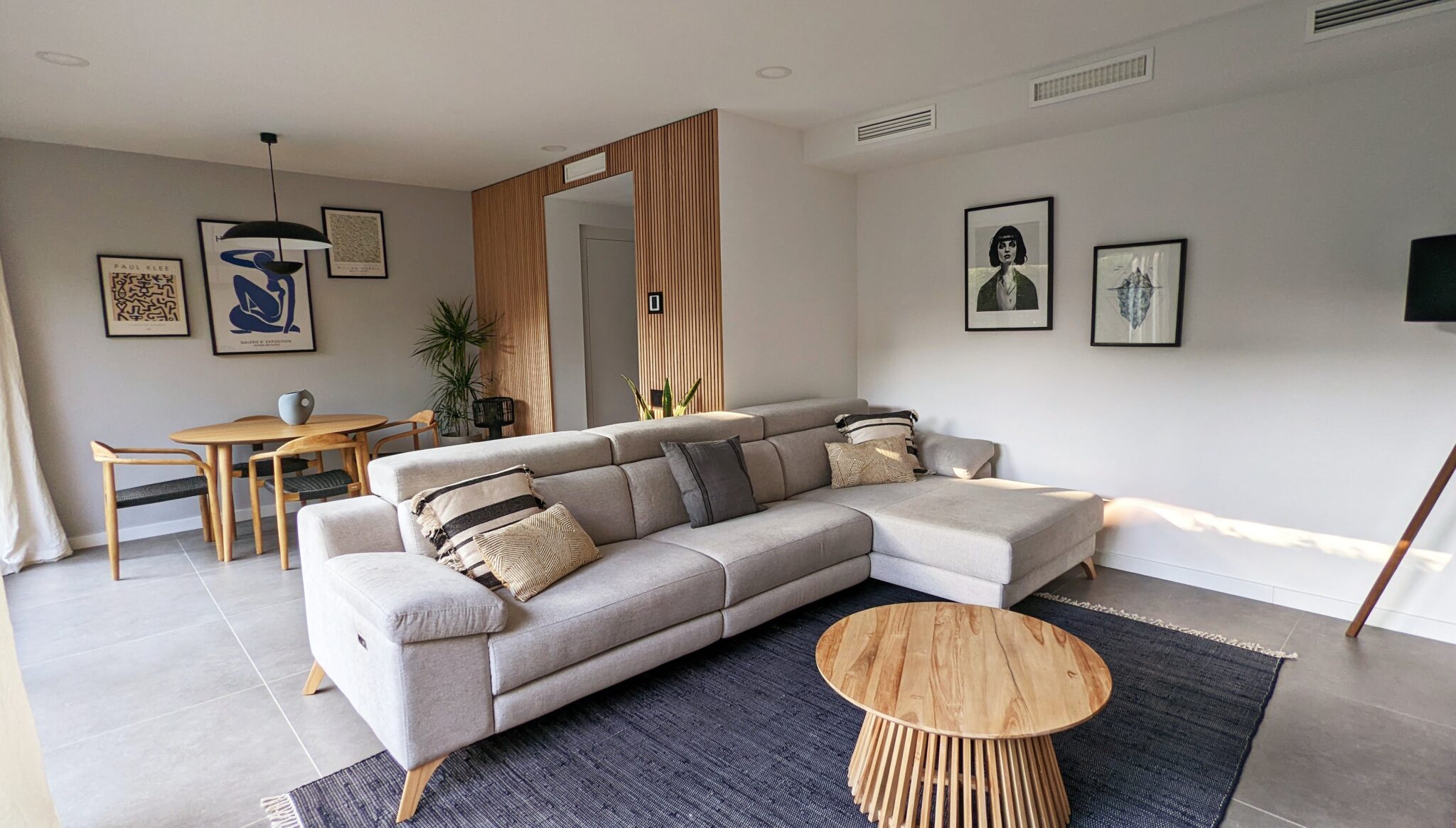However simple it may seem, deciding on your home’s furniture layout is a crucial task, as it may have quite an impact on the functionality and appearance of any space.
When choosing where and in what way we will place our furniture, there are many factors to consider. Hence, we offer you the following practical tips to efficiently accomplish your goal and achieve a pleasant result.

Take Measurements and Sketch Out a Floor Plan
Before buying any furniture, measure the space where you will place it and draw a room plan.
A sketch will help you to get a general view of the room and a better idea of how the furniture will be arranged. By doing this, you can prevent costly mistakes or future regrets.
Moreover, this process will help you identify any underutilized areas in the room, allowing you to explore options for optimizing the available space. Furthermore, it can be useful for deciding on the size and quantity of furniture needed. This will come in quite handy when dealing with a large room or a challenging space.
Creating a floor plan will be of great assistance if you are working with an interior designer or contractor, as it allows for clear communication of your ideas and expectations regarding the layout.
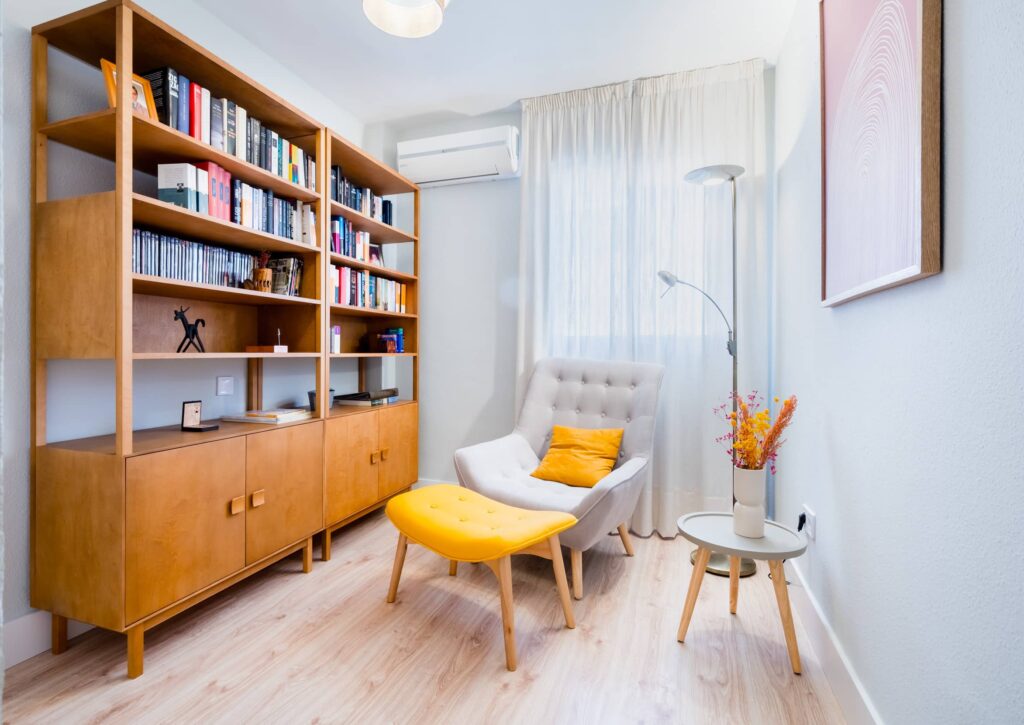
Spaces and Activities
When planning the furniture arrangement, it is essential to reflect on the activities that will take place, as the way in which the space is used directly affects its functionality. To accomplish this, we must take into account the needs and preferences of those who will be using the room and make the necessary adjustments to accommodate them.
This approach allows you to identify the optimal furniture placement, considering the specific space requirements for each activity. For instance, when setting up a living room, think of how the family and guests will sit and interact with each other. If you are working on a bedroom, contemplate how the bed, nightstands, and wardrobe will be utilized collectively to establish a calming and functional environment. Similarly, a dining room should have enough space for the table and chairs, along with a circulation area that allows diners to move around with ease. If the room is intended for entertainment, consider placing a large sofa in front of the TV and adding a coffee table for snacks and drinks.
You may also want to consider safety. For example, if the room will be used by children, it is important to avoid placing furniture with sharp edges or pointed corners.
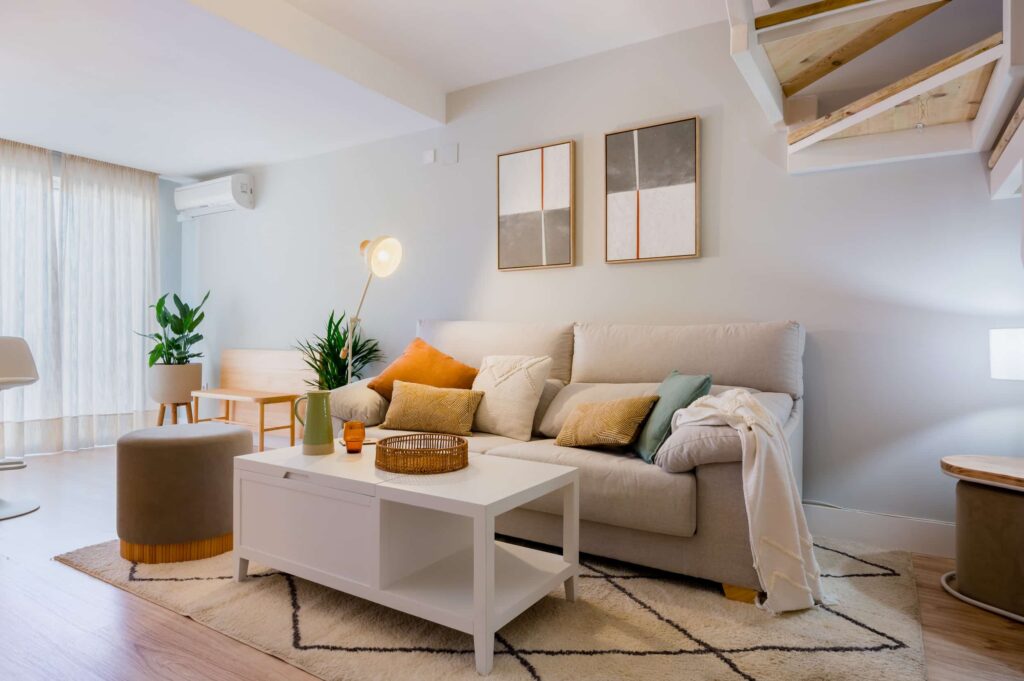
Deciding on the Orientation for the Living Room Furniture
Selecting the right orientation is important as it can have an influence on multiple aspects.
In the first place, and in line with what was mentioned before, it will affect how the space is used. For example, if the sofa or chairs are arranged to face the TV, the space will be probably used mostly for watching series or movies. Conversely, if they are oriented towards a window or a conversation area, they are more likely to be used for socializing or unwinding.
Moreover, orientation can also impact the level of comfort for the users. Placing a sofa in front of a window that receives intense direct sunlight may make users uncomfortable and require them to adjust their positions to avoid glare.
Lastly, when furniture is arranged in a pleasing and harmonious manner, the space will feel neater and more balanced.
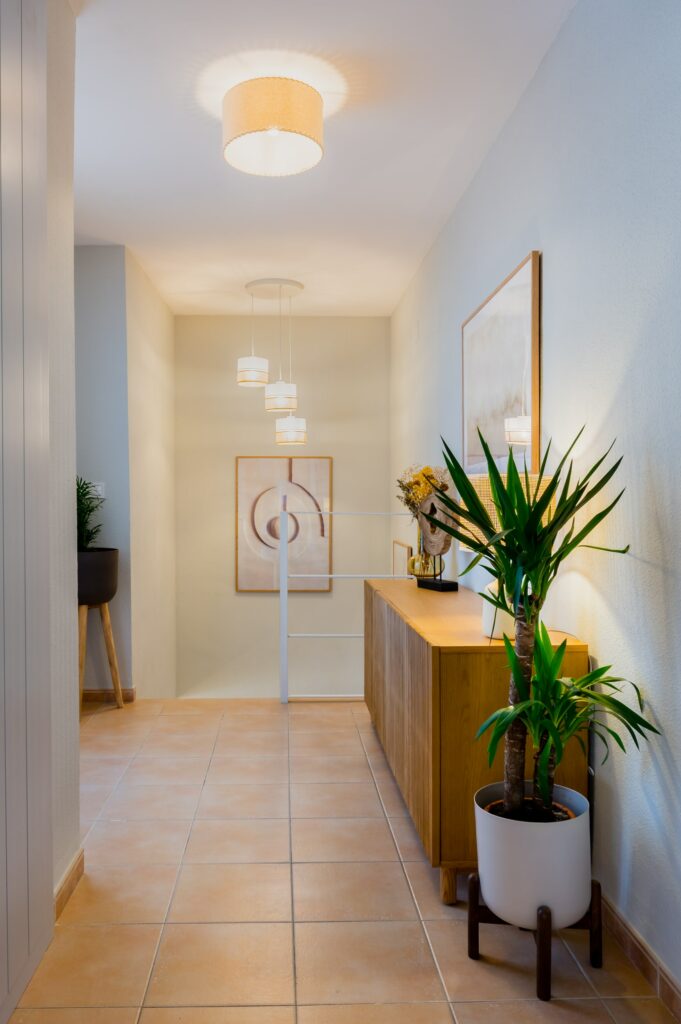
Make the Most of the Room’s Height
If your home has high ceilings, try to make the most of the vertical space available. By doing this, you will not only optimize the use of space, but also enhance the room’s overall brightness and spaciousness.
Consider incorporating furniture pieces that stretch from floor to ceiling, such as wardrobes, bookshelves, and shelving units, to enhance the verticality of the room and introduce texture. Moreover, these will add abundant storage space for books, decorative objects, and other items that contribute to customizing the space.
By hanging paintings or artwork on the walls, you can draw the focus upward and infuse the room with colour and style.
Similarly, floor-length curtains will make windows look larger. To maximize this effect, the curtains should hang from the ceiling rather than the top of the window.
Finally, you may also use lighting. Pendant lights or floor lamps can provide overhead lighting, creating a sense of spaciousness and height.
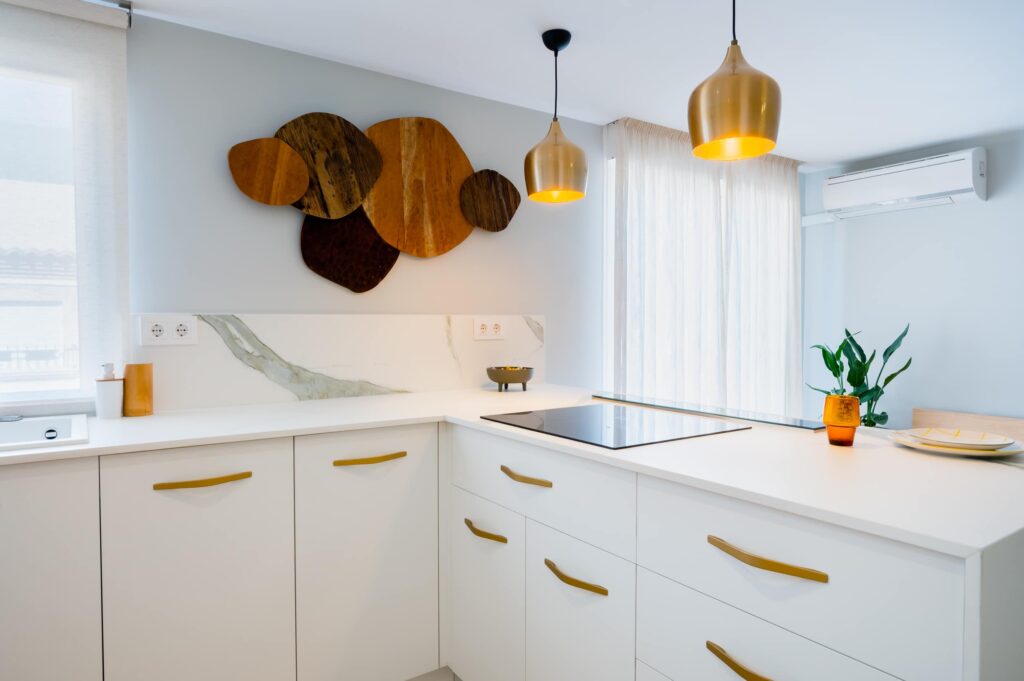
Avoid Blocking the Flow of Natural Light
There are multiple reasons why allowing the free flow of light is important when redistributing furniture. Blocking natural light with furniture or other objects reduces the amount of available light in a room, which can have negative effects on the health and well-being of those who live there.
Regular exposure to natural light can boost mood, concentration, and productivity. It also improves the overall aesthetics of the space, bringing out the beauty of objects and creating a brighter, more visually appealing ambiance. Moreover, it lessens the need for artificial lighting, resulting in lower energy consumption.
However, exposure to natural light can accelerate the ageing, discolouration, or loss of natural shine in some materials. Hence, we recommend finding a balance in the incoming light and carefully choosing which furniture to expose.
Consider the Traffic Flow
Ensure that the furniture allows for easy movement and circulation in the room. The term “circulation” refers to the way people move through the space and how they interact with the objects and furniture within it.
Considering this aspect while planning the furniture layout allows you to create a comfortable, well-organized, and functional space.
In order to achieve this, leave enough space for people to move comfortably around the furniture; avoid placing furniture in high-traffic areas or near doors and windows; ensure that it does not block the view or interfere with natural light; and arrange the space to create separate zones for different activities, such as resting, working, or dining.
Conclusion
Taking all these factors into account will allow you to create a functional, comfortable, and visually appealing space. So go grab a pen and paper, and let’s get started!
